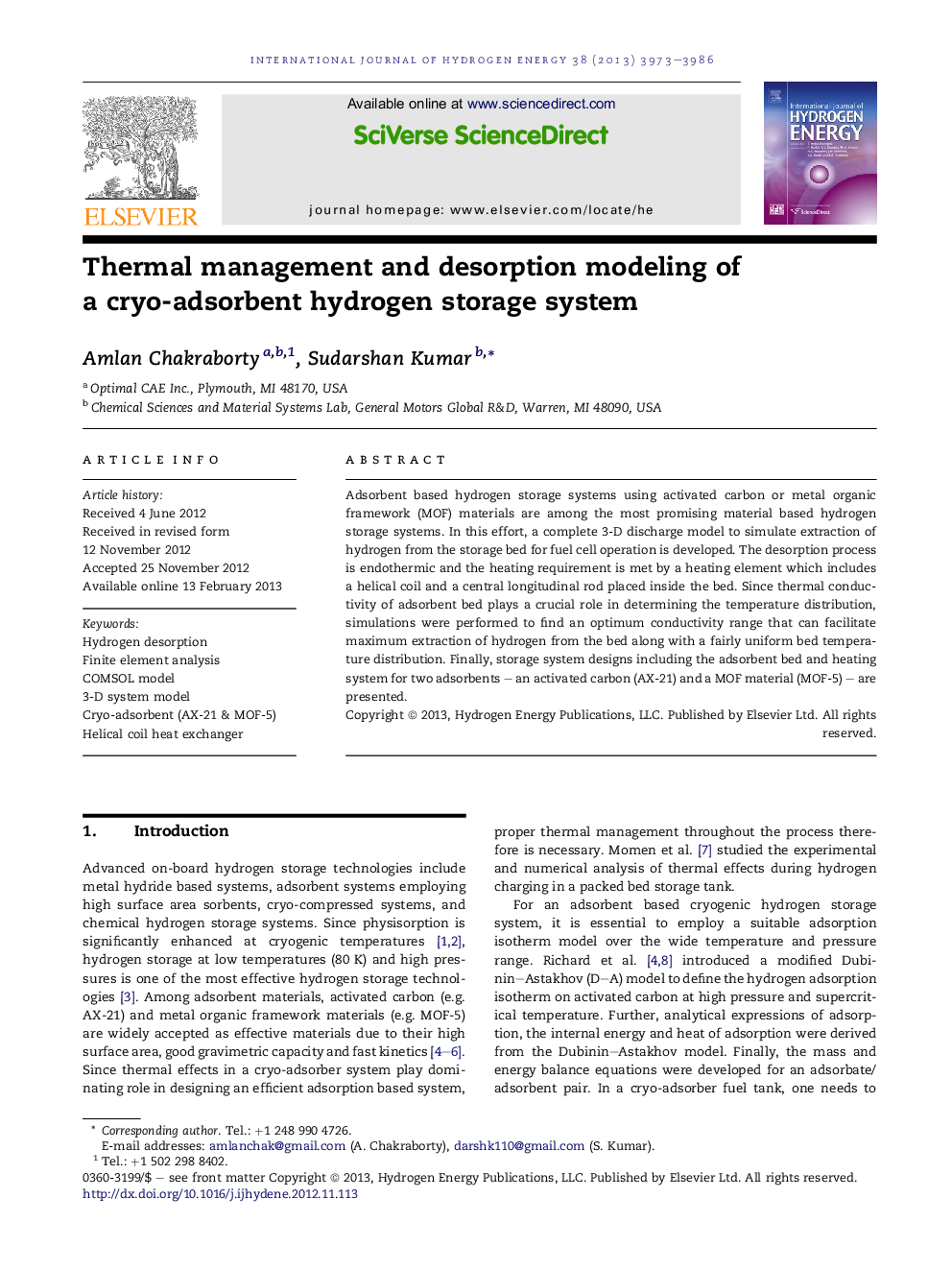| Article ID | Journal | Published Year | Pages | File Type |
|---|---|---|---|---|
| 1281861 | International Journal of Hydrogen Energy | 2013 | 14 Pages |
Adsorbent based hydrogen storage systems using activated carbon or metal organic framework (MOF) materials are among the most promising material based hydrogen storage systems. In this effort, a complete 3-D discharge model to simulate extraction of hydrogen from the storage bed for fuel cell operation is developed. The desorption process is endothermic and the heating requirement is met by a heating element which includes a helical coil and a central longitudinal rod placed inside the bed. Since thermal conductivity of adsorbent bed plays a crucial role in determining the temperature distribution, simulations were performed to find an optimum conductivity range that can facilitate maximum extraction of hydrogen from the bed along with a fairly uniform bed temperature distribution. Finally, storage system designs including the adsorbent bed and heating system for two adsorbents – an activated carbon (AX-21) and a MOF material (MOF-5) – are presented.
► Heating element design for hydrogen discharge from adsorbent bed. ► Optimal thermal conductivity for efficient hydrogen discharge. ► 3-D model for hydrogen desorption in an adsorbent bed is developed. ► Energy input for hydrogen discharge in a bed.
